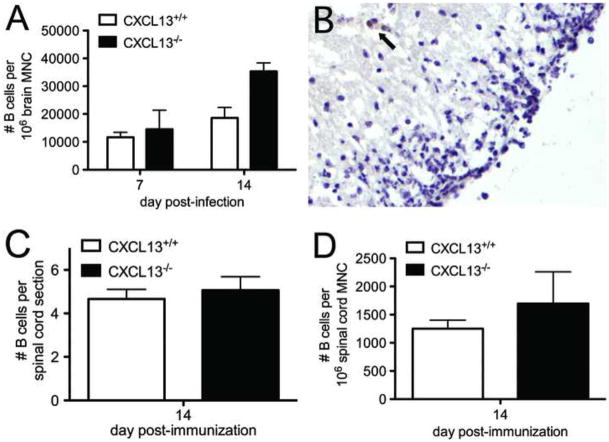Figure 4.
CXCL13 deficiency has little effect on B cell infiltration into the brains of mice with SV encephalitis or the detection of B cells in the spinal cords of mice with acute EAE. Flow cytometry enumerates B cells in the brains of CXCL13+/+ and CXCL13−/− mice during SV encephalitis. Cell counts are normalized to a constant number of brain MNC cells to account for slight differences in the total amount of brain inflammation (A). Immunohistochemistry identifies occasional CD 19+ B cells (arrow) in the spinal cords of CXCL3+/+ mice at the peak of EAE symptoms (B). Quantification of labeled cells in cross sections of lumbar spinal cord shows no difference in the numbers of B cells detected between CXCL13+/+ and CXCL13−/− mice (C). Flow cytometry conducted on pooled spinal cord samples demonstrates equivalent numbers of B cells among spinal cord MNC from these two hosts (D). All bars represent the mean ± SEM of numbers measured from at least triplicate animals.

